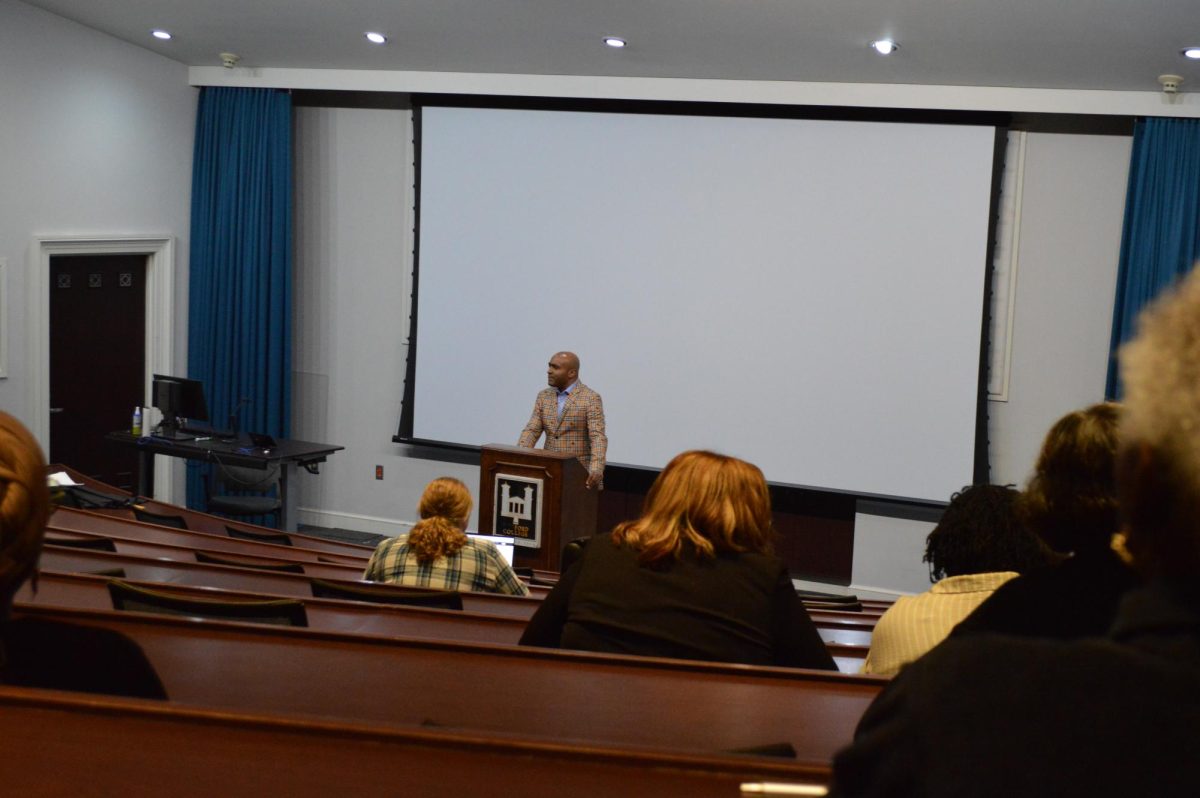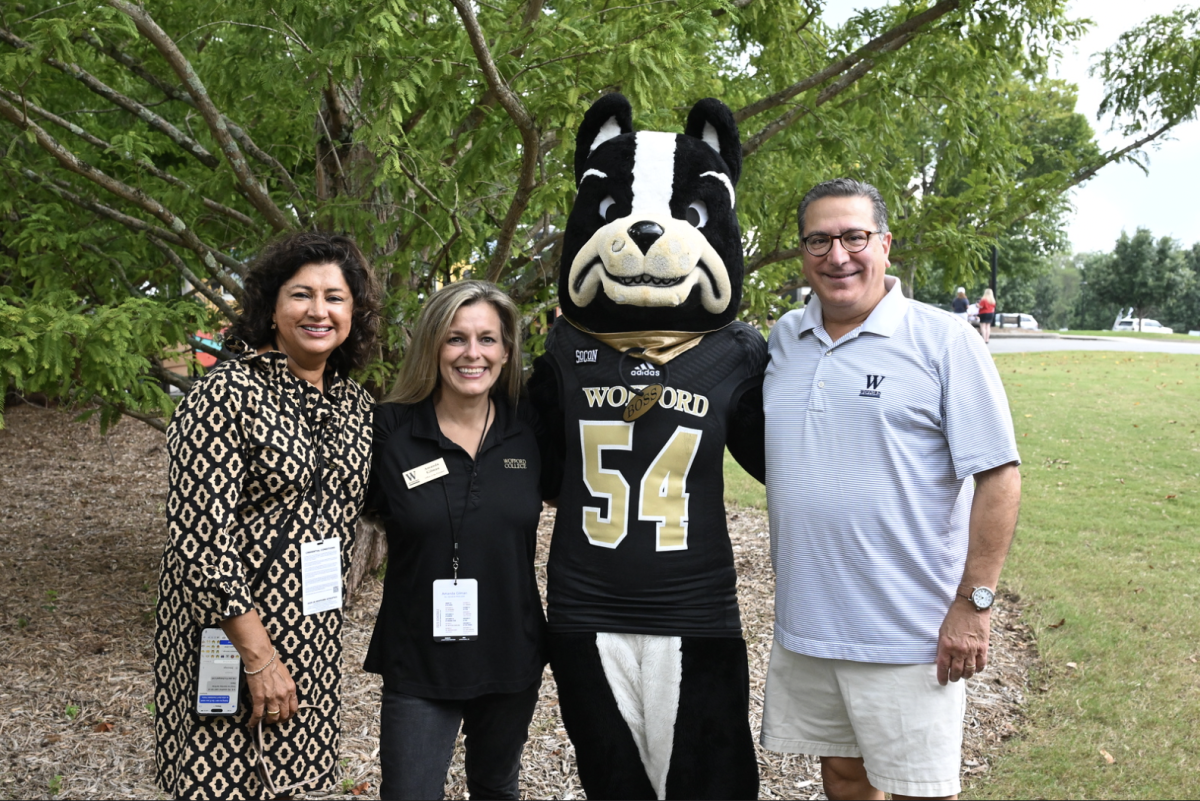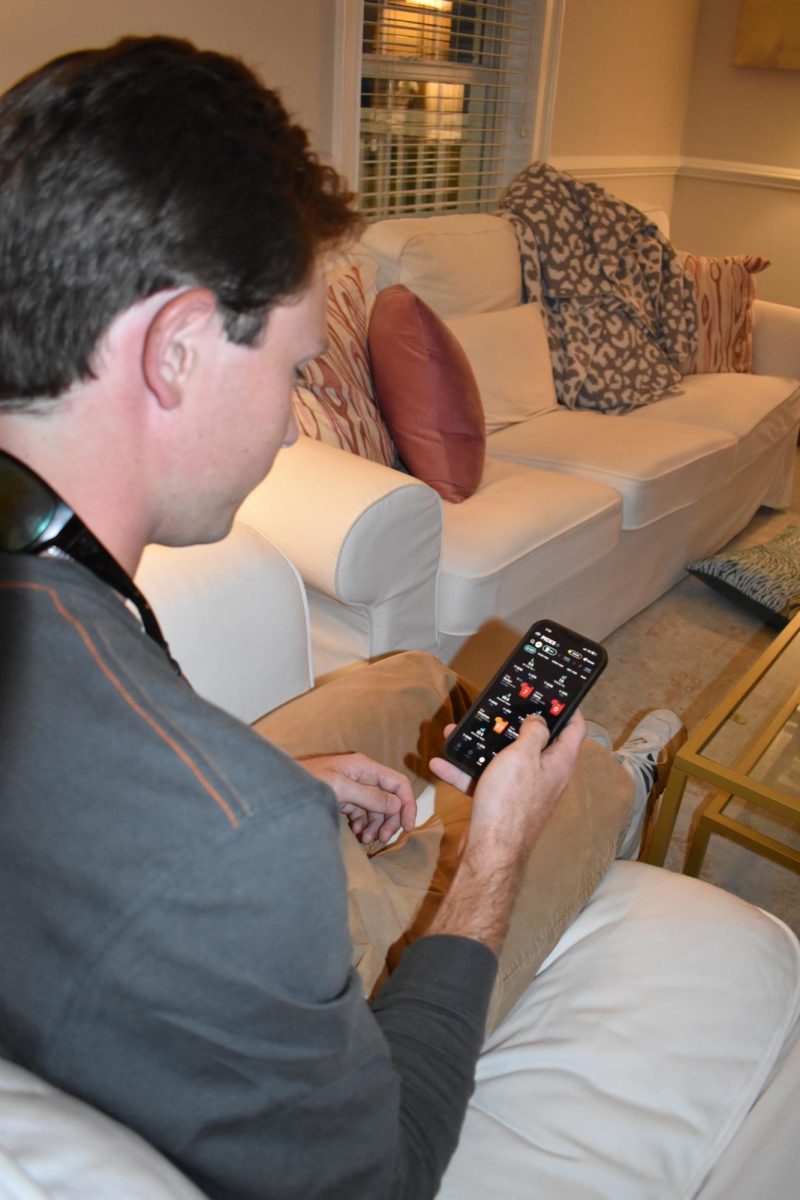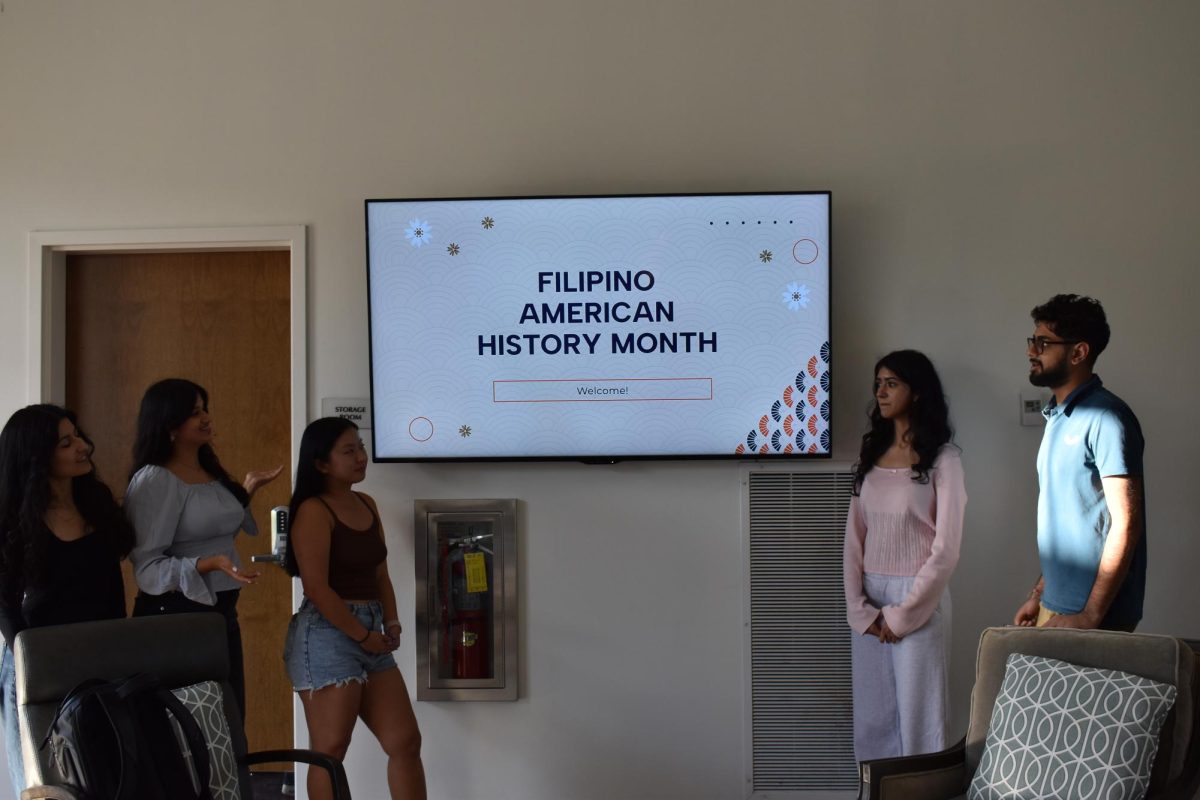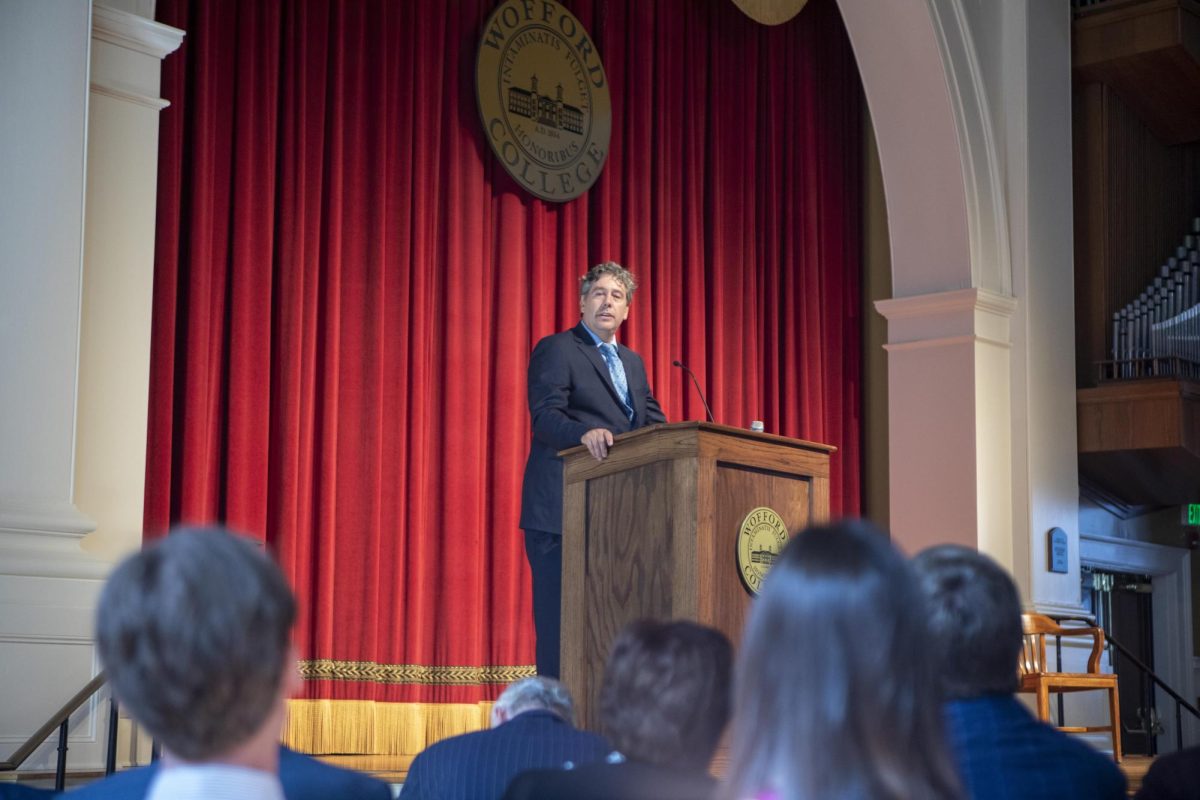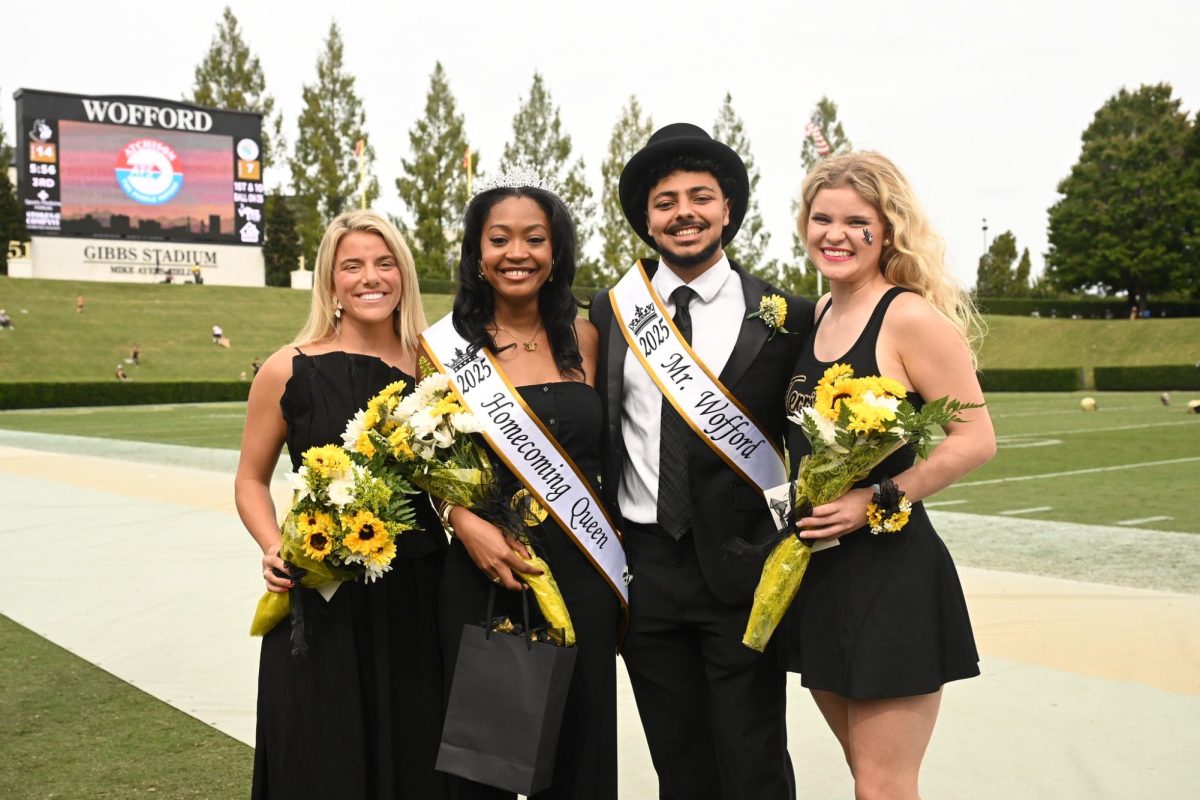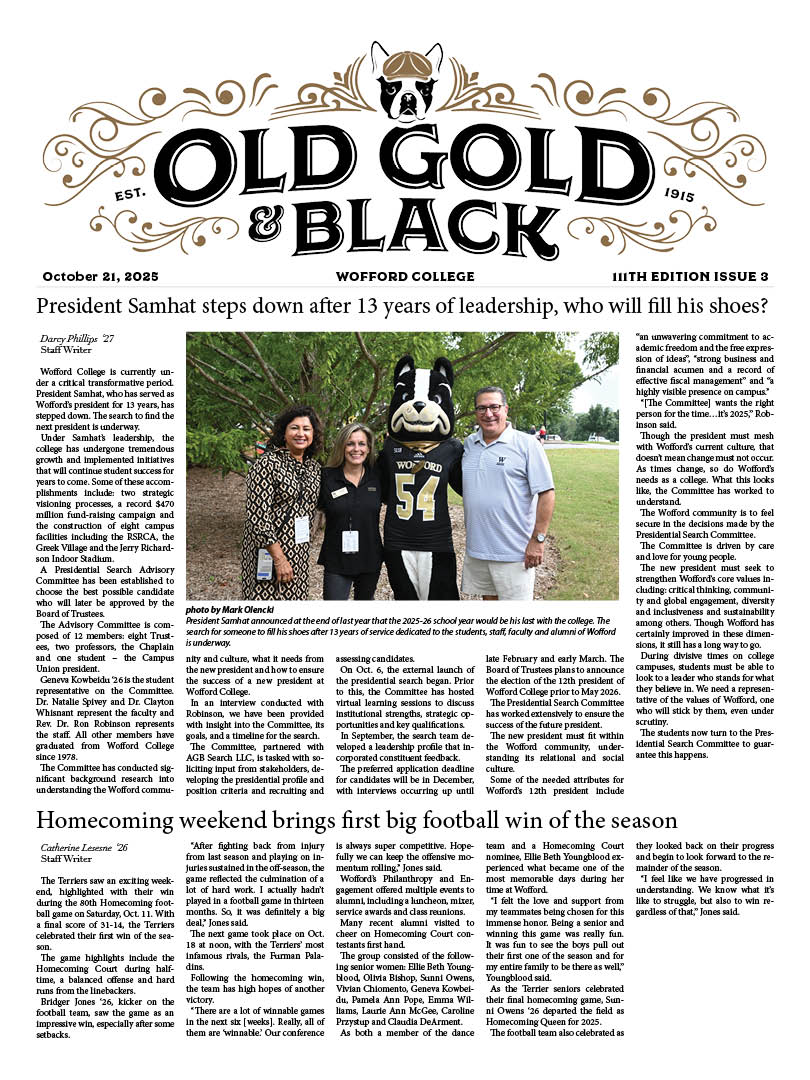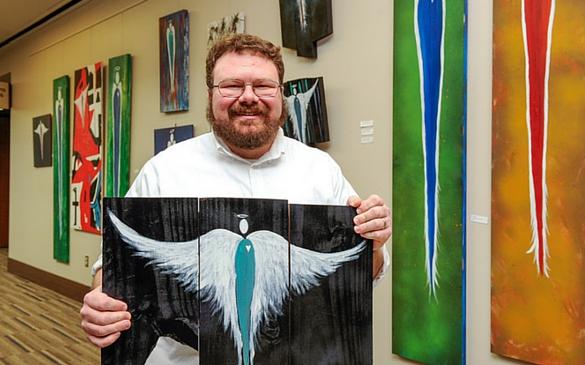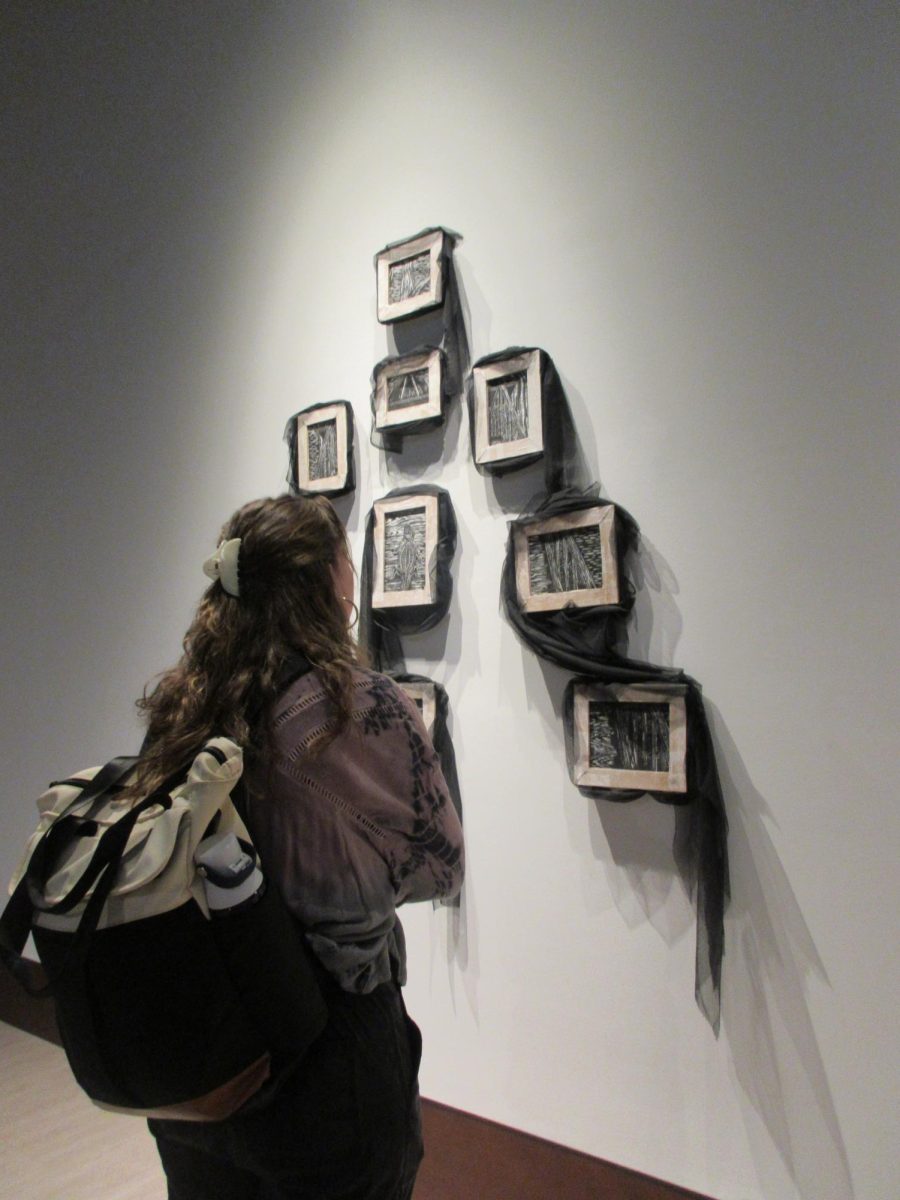By: Addie Lawrence, Editor
Kris Neely, assistant dean of studio art and program coordinator, will leave Wofford at the end of the 2016 spring semester. In the fall, he will begin his new position as professor of art and director of interdisciplinary studies at Spartanburg Methodist College (SMC), a two year residential liberal arts college.
“There’s no reason to leave Wofford, except that there’s an opportunity to build something else, and that’s what I am,” Neely says. “I’m a builder. I’m a person who loves to create.”
An alumnus, Neely began his career at Wofford as director of residence life. He built Lesesne Hall to house sophomores who were living in Skylyn, a nursing home, and later drew pictures on napkins that emerged into the senior Village. Neely also worked as director of project development and executive director of Success Initiative before becoming Wofford’s first tenured track studio art professor.
For Neely, his move will be “bittersweet.”
“I think this will be a hard change. I think people have already expressed frustration, remorse, wistfulness,” Neely says.
“The hardest questions that I’ve had are from friends, students, colleagues who have felt like they didn’t do enough to keep me here.”
Neely cites his conversation with Dean Roberta Bigger, who told him “Wofford is a way of life” when he was first hired.
“When I talked with her, it was the hardest conversation I ever had because I was telling the best boss I ever had that I was going on to work for another boss,” Neely says. “She was really frustrated that I had made this decision, and she worked very hard to try to figure this out for me not to leave. And that’s because she loves this place so much.”
“It brings tears to my eyes just thinking about it,” he adds.
From his time as an undergrad, the studio art program at Wofford has grown from a single class taught by an adjunct professor, which usually filled with fifth year seniors, to a minor program with three of 10 classes taught by Neely himself during the 2016 spring semester.
“When I was an undergraduate student, I almost left Wofford because of the lack of opportunity for visuals artists,” he says. “I knew from my time in student affairs that a strong studio program was a key to good retention. In any community, you’re going to have students who want to work on visual art, and if you neglect it, then they will not be able to have the programs that they need to retain them at the college.”
“I believe studio art is a vital part of any college education,” he adds. “It’s important for Wofford, and I’ve fought as hard as I could to get us to appreciate what that kind of creative, collaborative learning could do for Wofford students.”
Neely’s exit will occur in the midst of changes to Wofford’s studio art program. The Rosalind S. Richardson Center for the Arts has a projected completion date of February 2017. The center will provide space for studio art classes that are currently taught in “ill-equipped or peripheral spaces,” such as the Cavalry Baptist Church.
Additionally, Jessica Scott Felder, a Spellman College graduate from Atlanta, has accepted a position to teach painting and drawing courses at Wofford. Neely hopes that Wofford will fill his absence with new faculty.
“Wofford students have a seemingly insatiable appetite for studio art,” Neely says. “They know it’s something they want to have as a part of their college experience. In many ways, their advocacy for the program, their willingness to take classes in inferior spaces and put up with inconveniences, are the things that have allowed the college to take the growth steps that we’ve needed to take in order to get to the place of having a new building.”
Neely says that he’s proud of what he’s been able to accomplish at Wofford, though his initiatives have not come without challenges.
“None of these innovations, none of these changes, none of these program shifts since I’ve worked in residence life have ever come easy,” Neely says. “Change is always hard, and there always are battles and fights and arguments over minutia, but I think that leaders – and particularly creative leaders – have to be able to cast a vision, bring other people on board, and move in the direction that you believe in.”
“I don’t look on any of those struggles as reasons to leave, but just part of the process,” he adds.
According to Neely, the students are what he’ll miss the most about Wofford. At SMC, Neely says he will be serving a different, rather than a rival, need.
Most of SMC’s students are first generation college students “building something that hadn’t existed in their family tree before,” Neely says.
According to Neely, percentages of successful transfers from SMC into four year institutions are “staggering.”
“In the retention we seek at the College, if we had their record of students finishing a program in four years, we would pay money to be able to claim that,” Neely says.
Neely isn’t the first Terrier to migrate to SMC. Scott Cochran, former dean of The Space and current president of SMC, and Lisa Ware, former marketing director of The Space and current vice president of marketing, preceded Neely’s move. According to Cochran, SMC is looking to expand its student body, and according to Neely, the “impact and reach” that SMC students have as they transfer to other institutions is “extremely appealing.”
“Professor Neely will be a student magnet for SMC’s art program,” Cochran says. “He is an amazing professor and talented artist who develops deep relationships with his students. He instills confidence, and under his guidance, students achieve far more than they ever thought possible. Their confidence in his classroom will spill over to other parts of their lives, academic and otherwise. Not only is he a fantastic professor, he’s also an entrepreneur and is well known in the community, which will increase our program’s visibility.”
Both Cochran and Neely see potential for an artistic relationship between Wofford and SMC, including opportunities for collaboration.
“Our professors are similar to Wofford’s in that they believe in the value of a liberal arts education and love developing close relationships in the classroom with students,” Cochran says. “They love teaching, and they thrive on seeing the lightbulb go on and in seeing students achieve.”
“Professor Neely makes art come alive for students, and his classes will be in high demand,” Cochran adds. “He invests in each and every person that he encounters. People naturally gravitate toward him… you can’t help but want to be around Professor Neely and learn from him. Most importantly, Professor Neely is a team player who wants to contribute to the growth of SMC… and he will!”
Neely will teach his interim course, “The Self-Taught Artist at Work,” as well as an intro to studio art class at Wofford over the summer of 2016. In the fall, he will maintain involvement in a living, learning community on campus that focuses on visual culture and how images communicate ideas.
“In some ways I think we had started to imagine my role and studio at Wofford as inextricably linked,” he says. “I had started to think of it that way. What I began to realize was that I was maybe holding on to this thing a little too tightly. I know from my own studio practice that there is a lot of joy in creating art, and there is a different sort of joy when that art can be released to a collector, a museum, an exhibition to let other people enjoy it.”
“It’s great to hold a top in your hand. But if you spin it and let it go, it’s a whole lot more fun. That’s where the magic is.”


